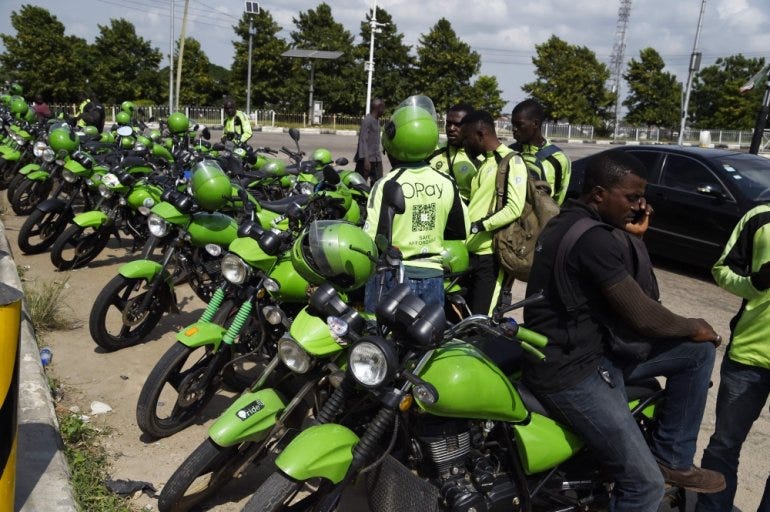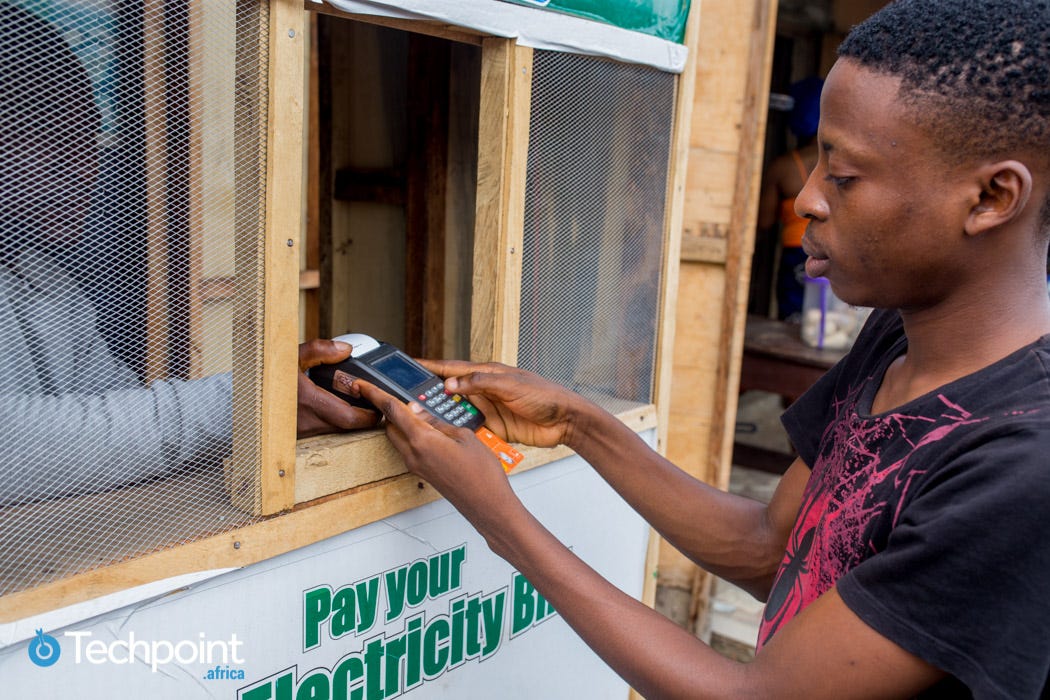First of all, what’s a blue ocean? The best way to describe it is that there’s every other bank you know and use, and then there’s OPay. You don’t need much to see that they’re in a different league, and are simply playing their own game. That’s what a blue ocean is.
OPay has 40 million subscribers. That’s twice the population of Lagos state, Nigeria’s most populous state. It’s also 20% of the country’s total population. If you’ve worked in consumer tech in Africa before, you know how hard it is to pull that off.
For good measure, Access Bank has been around for two decades and they have around the same number of users. OPay was born in 2018.
This begs the burning question — “how did they do it?”
There are many frameworks for looking at their success, but it all comes down to an obsessive focus on the customer’s experience.
The Nigerian Customer
The average customer in Nigeria’s consumer fintech industry gets a bad rap. Not only does he (or she) come with high acquisition and retention costs, but they also have little disposable income, so you’re not looking at a high revenue per user either. For a logical analyst, this person is simply not worth your time and energy.
With most Nigerian banks, customers are treated as an afterthought. It’s not uncommon to see Nigerians bemoan the services of the banks they use. From unexpected service outages to erroneous charges and petty inconveniences, these people use banks not because they want to, but because they have to.
This is a regular Tuesday at a Nigerian bank.
This was always the real opportunity for Neobanks — fixing the broken UX with technology.
Nigeria, a Cash Cow
On the other hand, Nigeria had a cash cow — its informal economy. Some figures place it as being larger than the formal economy and it is mostly cash-based. Using a large network of agents and the POS terminal, they conquered this market, turning every neighbourhood stall into a self-sustaining ATM.
This was transformative in shaping how the informal economy dealt with banking services. The speed and convenience of transactions were unmatched. They quickly grew popular for it and the signups were through the roof. Rumor has it that they built their payment switch and it paid off massively.
The firm’s destiny was also helped by the fact that back in January 2023, the CBN governor decided that the currency notes had to go, and everyone was given an ultimatum to turn in their old notes in exchange for new, bleached notes.
The result? A crazy cash crunch that cost many lives and threw the country into chaos. User behaviour changed and people started using bank transfers more often.
OPay saw a cash cow in the Nigerian economy and carved a piece of it for itself.
“What money cannot do, more money will do”
It’s interesting to remember that the biggest bank in Nigeria didn’t start out trying to be a bank. It actually started out as a super app. Remember ORide? OTrike? OKash? OFood? They all died so OPay could live.
In 2018, Opera (yes, the mobile browser company) started searching for the holy grail of startup markets in Nigeria. In 2019, they raised $50 million to find it, and they struck gold with ORide, but regulation kneecapped their growth.
They then dropped every other thing (except olist.ng which, funnily, is being shut down tonight) to focus on OPay, the payments platform. To date, the company has raised $570m and is valued at over $2b. With a customer base of 40 million subscribers, there’s definitely more room for growth. They have the brand, they have the users, and they have the firepower.
So, how do you build a bank like OPay?
Focus obsessively on the customer
Most services Nigerians use are broken, but they use them because they have no choice. Therein lies your alpha for any industry you’re looking to disrupt. A better customer experience will take you places.
Have good unit economics
The term unit economics refers to all the costs and revenues associated with one user of your product. It’s hard to imagine that Opay has a higher cost of acquiring customers than the revenue it earns from them. And even if it does in the short term, the lifetime value of the average customer more than makes up for it.
Think from first principles
Getting a microfinance bank license isn’t exactly what you’d expect from a challenger bank in an industry. But it is what happened. Imagine OPay being bedevilled by the same capital controls and regulatory requirements as a Tier 1 bank as GTBank. They’d probably never have made it here.
Have $50m to spare
It never hurts to have money the size of an African startup exit for a start. The path to startup heaven is paved with investor funds, and $50m worth of it would definitely bring your dreams of world domination to life.
Go after non-consumers
Being in a blue ocean is all about finding uncontested market space. The best place to find that is to go to the non-consumers, people who are not catered to by the current market. Most people in Nigeria’s informal economy aren’t being catered to by the banks. At least not in a way that customers are satisfied with.
Lastly, have crazy good distribution
OPay could have built a virtual banking app only and ended up like Kuda Bank. That’s not a bad outcome per se, but Kuda Bank claims to have 6m customers and that’s not a real challenger if we’re being honest.
Building for POS agents was a solid distribution hack. It allowed them to build a strong market share in the informal economy while offering an app for more savvy people in the formal economy.
Today, you can stand in the middle of a market and see five POS stands within two minutes of you. Also, the product was good enough that word of mouth handled the rest.
That, folks, is how you build the fastest-growing bank in Africa.
Stuff I’m currently reading
Marchetti’s Motorcycles by Osarumen Osamuyi
Cash To "Cashless" in Africa - An Alternative Mobile Payments Hypothesis by Victor Asemota
The Prosperity Paradox by Clayton Christensen and Efosa Ojomo
The Evolution of Agency Banking in Africa by Paystack
What did you enjoy about this article? Let me know your thoughts in the comments!








It was a good read, I enjoyed it.
The Nigerian formal and Informal trade sector is big and fast growing.
The conventional banks couldn't evolve to serve them better. They were complacent, and had become stagnant.
You needed money, you had to go to an ATM or queue up at the bank to make cash transfers.
Opay identified the lapses and was able penetrate the market by bringing their services as close as possible to their target consumer. Even being able to create an account with your phone number.
It was wild to see POS terminals spring up at various places even in remote areas, you could check 3 kiosks and at least one will have a POS terminal.
Also, their electronic transaction was instant or lightning fast, which made it widely adopted than using conventional banks whose cash transfer could take an hour to a full day. So it was good for running a cashless business.
One thing also really helped and it was the word of mouth.
You cannot underestimate the power of the word of mouth.
Lastly, I believe a lot happened of other things that innocently helped Opay boom in Nigeria.
Would like to hear your thoughts on Moniepoin which rebranded and adopts the same Business model as Opay?